Homemade Citrus Dust
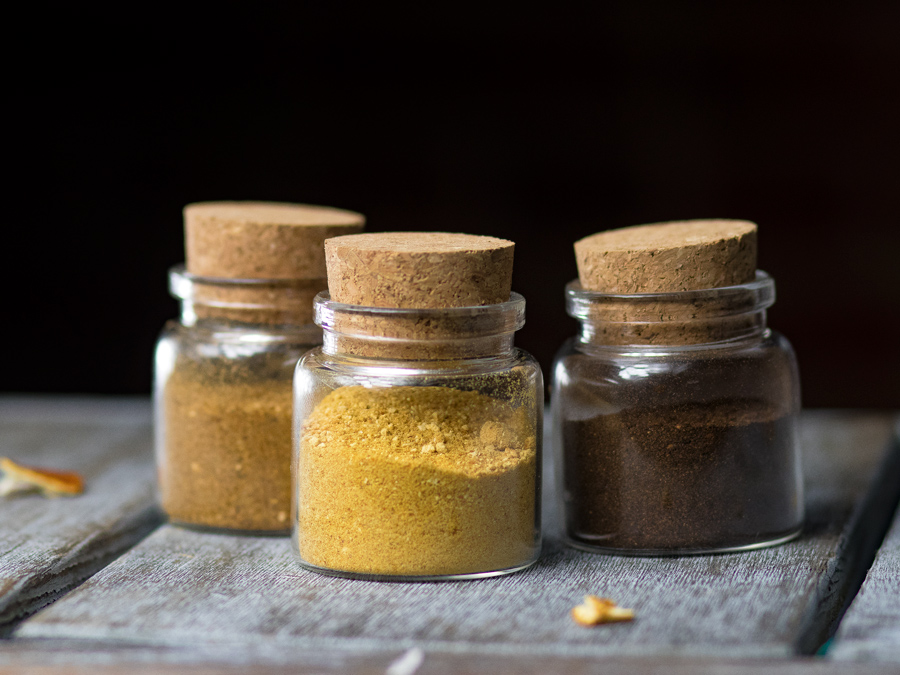
Sign up for our free email subscription and never miss a recipe.
In the winter, you might find yourself a bit disappointed with the fresh fruit selection in the farmer’s market. But while tropical fruit, melons, and berries are not up to par, January is, in fact, the best month for everything citrus.
However, we don’t necessarily follow the rule that when life gives you lemons, you must make lemonade!
Now that grapefruit, tangerines, and kumquats are at their peak, and we are finally seeing blood oranges pop up in the stores, we took advantage of winter’s best harvest and decided to make some citrusy treats that we can enjoy all year round.
Enter the citrus dust(s)
Sorry lemonade, maybe next time.
Made by blending toasted (dehydrated) citrus, these acidic powders are not only a great way to preserve fruit, but they also make one hell of a cocktail ingredient that can be used in many different ways. (see below)
Here is how to make it
(we made three varieties – Lemon, Pink Grapefruit, and Navel Oranges, but you can use any citrus you wish. Just make sure your fruit is fully ripe.)
After making your citrus selection, make sure you wash the fruit with cold water. Then, soak the fruit in a vinegar solution for about 5 minutes (1 part water – 1 part white vinegar)
Using a mandoline, slice the fruit as thin as possible. Lay out the citrus wheels on parchment paper covered baking sheet and place in the oven. (we dried some sage with our fruit to give our citrus an herby aroma)
Dry out the citrus until the wheels get crisp. The best temperature to do so will be between 125 and 170 Fahrenheit. Don’t try to speed up this process by drying at a higher temperature or the fruit will burn. (this process could take between 6 and 12 hours depending on the fruit you are drying, the thickness of the wheels and the minimum temperature of your oven)
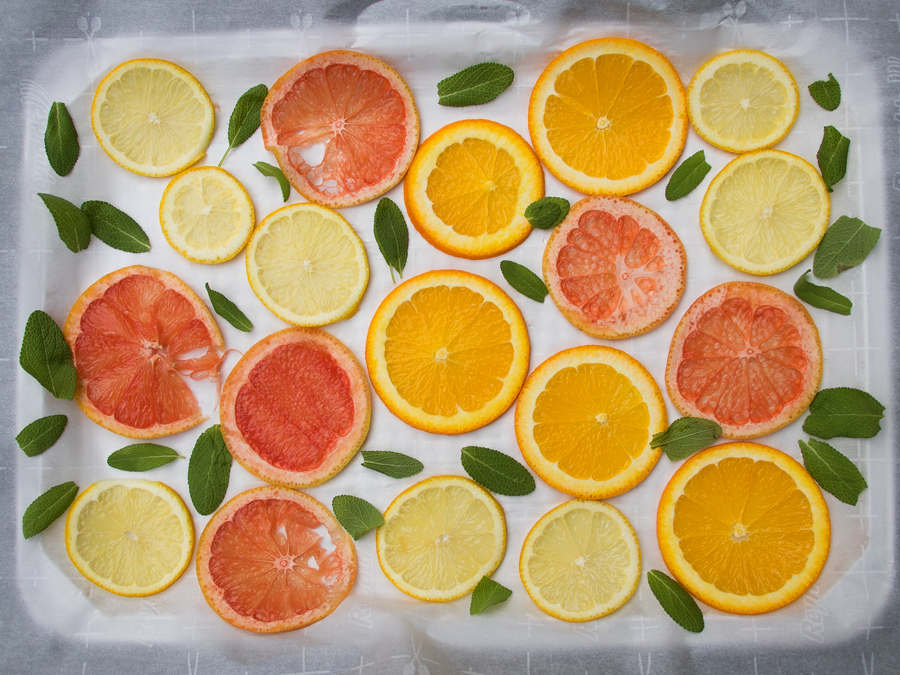
Once crisp, take the wheels out of the oven and let them cool down before powdering them in a blender.
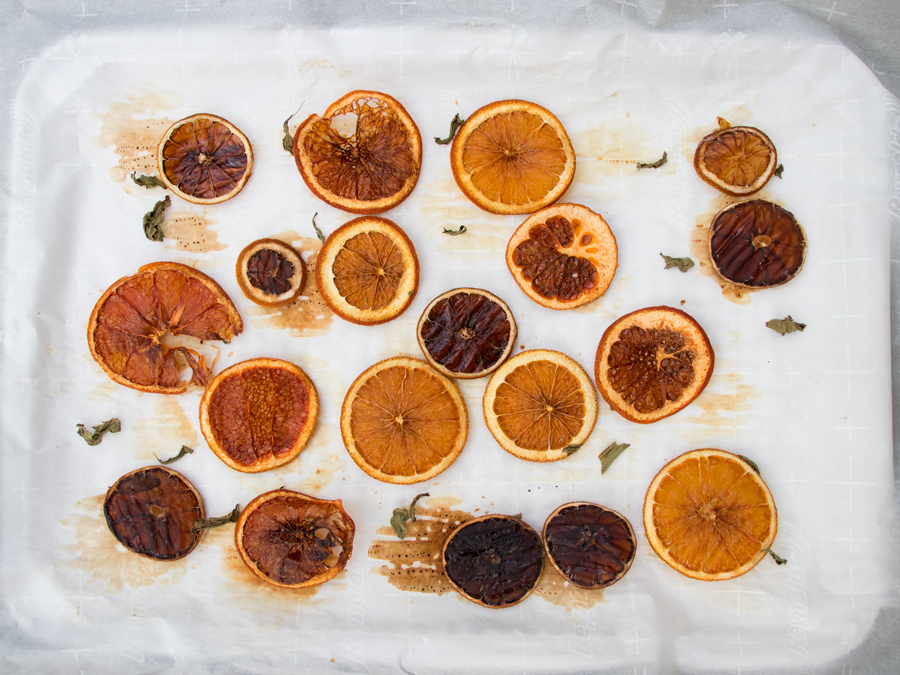 (don’t let the citrus wheel out of the oven for too long before throwing them in the blender. They might re-moisten, making it impossible to blend into a dust)
(don’t let the citrus wheel out of the oven for too long before throwing them in the blender. They might re-moisten, making it impossible to blend into a dust)
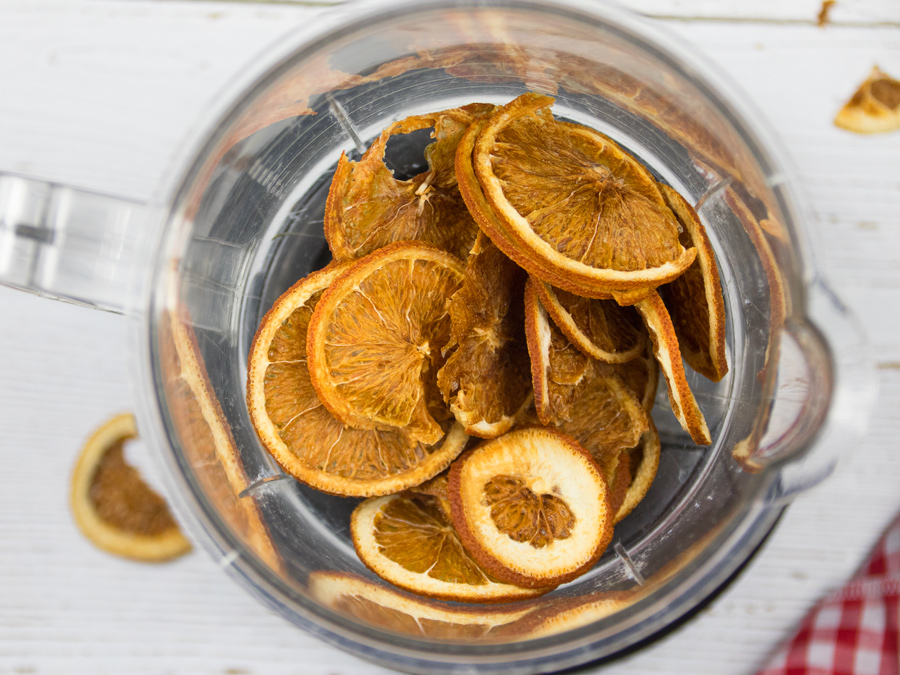
Grind the crisp citrus wheels in a blender until you get a fine powder-like texture.
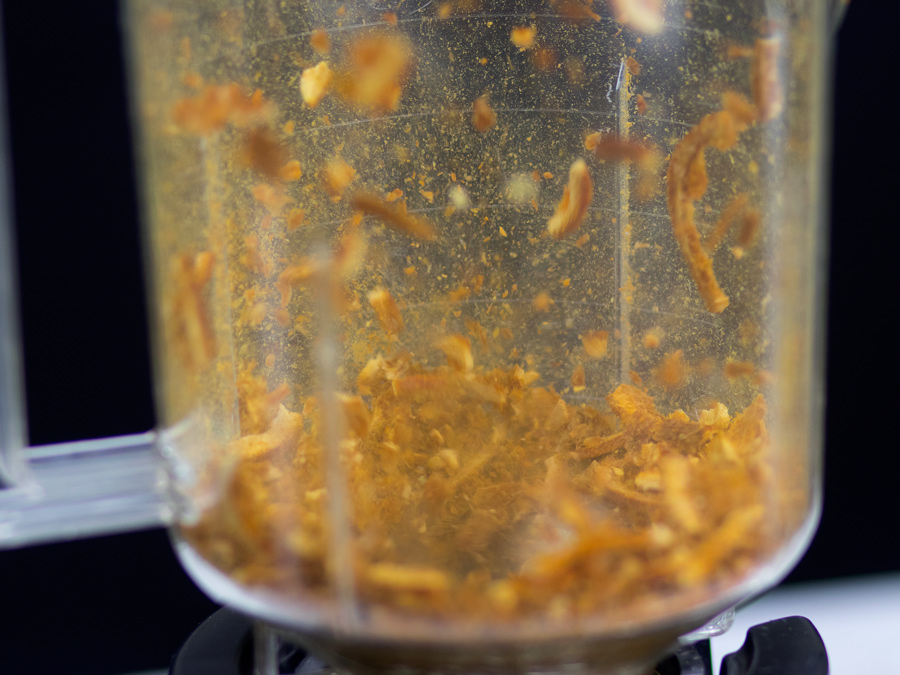
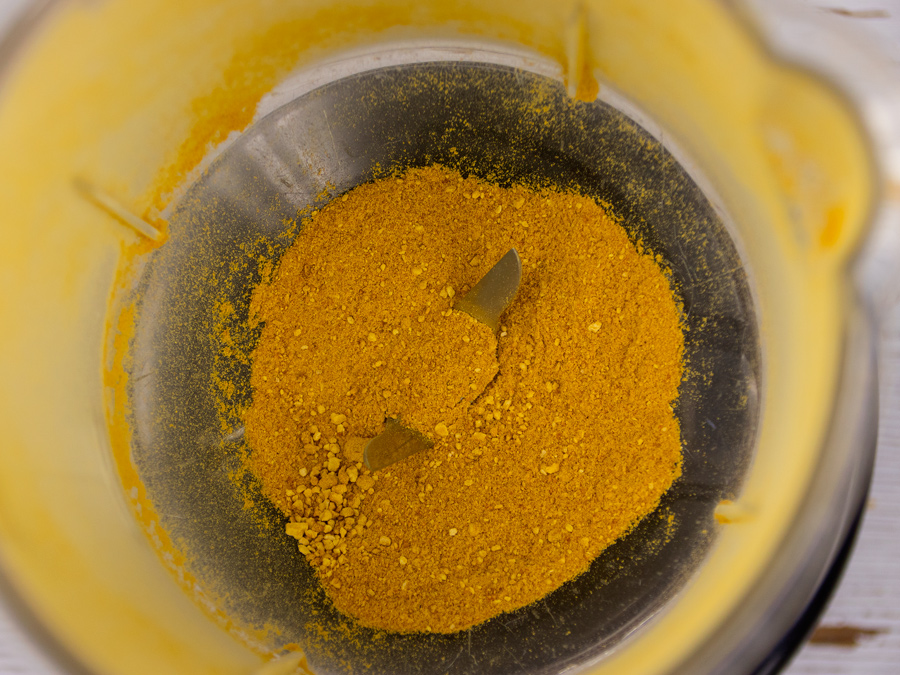
(If your dust still feels a little moist, spread it well on the parchment paper and toast it for another 30 minutes or until it gets completely dry)
Store the dust in zip bags or sealable jars, making sure no moisture gets in.
(good for up to 2 years if preserved properly)
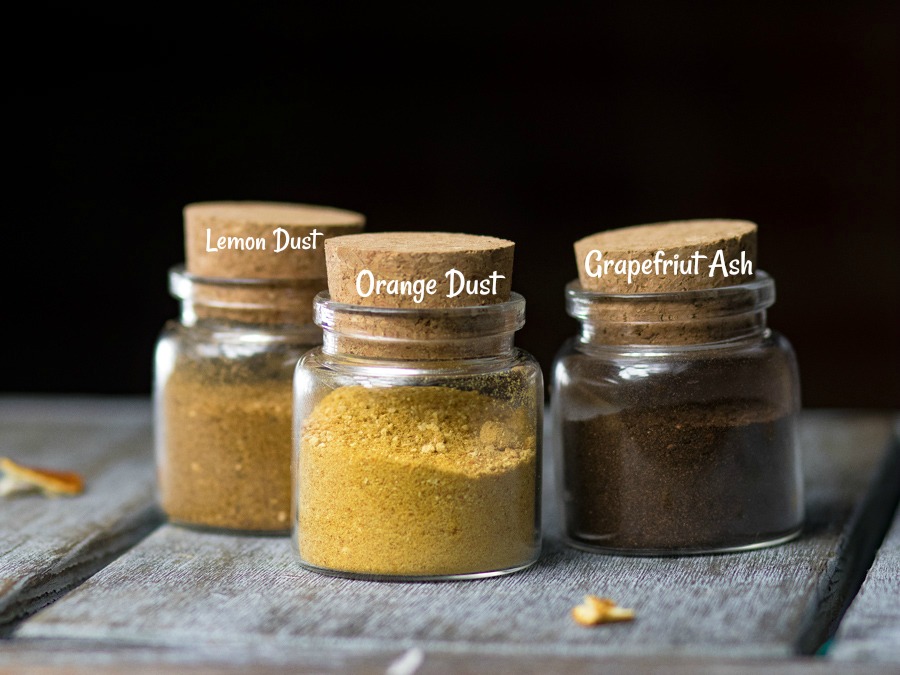
Viola! Easy to make, the citrus dust is flavorful, refreshing and most importantly slightly toasty, giving your cocktails a lovely smoky flavor and aroma. Whether you are a professional bartender or a cocktail enthusiast, these citrus powders are a great way to add that little extra oomph we all want in our cocktails. 🍋
(You might notice the dark color of the grapefruit powder and that we labeled it ash. We experimented with the grapefruit, leaving it a little longer at a much higher temperature to burn it completely. With the burnt grapefruit wheels, we made grapefruit ash, instead of dust. Another new-ish technique we have been wanting to try. The ash was much smokier, yet still citrusy and flavorful – it smelled like citrusy flavored coffee, so we immediately put into use, rimming an espresso martini. It worked fantastically. So give this technique a try if you find yourself craving something extra smoky)
Uses
- Rim a cocktail glass with citrus dust
- Rim an espresso cup with citrus dust
- Using a powder shaker, sprinkle citrus powder over cocktails with egg whites
- Use the dust straight in a cocktail as a fresh fruit juice substitute.
- Combine with salt, sugar, cinnamon, etc. to make flavored spices.
- Sprinkle over ice cream
Homemade Citrus Dust
Ingredients
- 4-10 Citrus of Choice (depending on size)
Instructions
-
After making your citrus selection, make sure you wash the fruit with cold water. Then, soak the fruit in a vinegar solution for about 5 minutes (1 part water - 1 part vinegar)
-
Using a mandoline, slice the fruit as thin as possible. Lay out the citrus wheels on parchment paper covered baking sheet and place in the oven. (we dried some sage with our fruit to give our citrus an herby aroma)
-
Dry out the citrus until the wheels get crispy. The best temperature to do so will be between 125 and 170 Fahrenheit. Don't try to speed up this process by drying on a higher temperature or the fruit will burn. (this process could take between 6 and 12 hours depending on the fruit you are drying, the thickness of the wheels and the minimum temperature of your oven)
-
Once crispy, take the wheels out of the oven and let them cool down before granulating them in the blender. (don't let the citrus wheel out of the oven for too long before throwing them in the blender. They might re-moisten, making it impossible to blend into a dust)
-
Grind the crispy citrus wheels in a blender until you get a fine powder-like texture. (if your dust still feels a little moist, spread it well on the parchment paper and toast it for another 30 minutes or until it gets completely dry)
-
Vacuum seal the dust, making sure no moisture gets in.
How would you use citrus dust? Drop us a line in the comment section below. Happy dusting everyone.
SaveSave
SaveSave
SaveSave
- Posted In:
- DIY



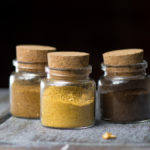
Leave a Reply
You must belogged in to post a comment.